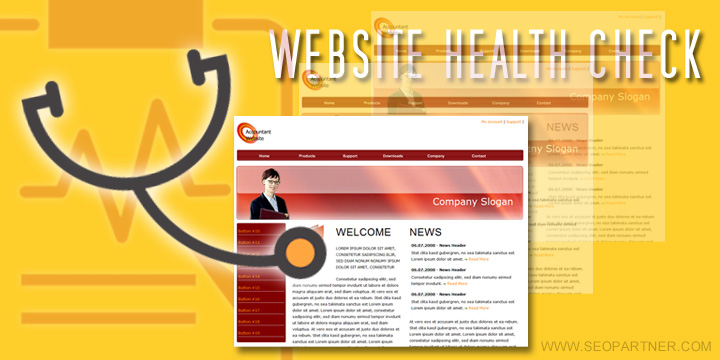Source: http://www.searchenginejournal.com/perform-first-seo-audit/130723/
SEO Audit is identifying and pinpointing any existing weakness within your site. There are so many things to look at and every bit of information usually leads to another discovery. Here is an all-inclusive list you can follow:

Pre-Audit Checklist
1. Talk to the Client – this is where you communicate with your client and learn more about the business. This is where you ask questions to your client and eventually get a deeper understanding on how your SEO strategy will affect their business.
2. Defining Goals – get the client’s goals and create a timeline that will reflect those goals.
3. Accessing Analytics and GWT – make sure you have admin rights to the site’s Google Analytics, Google Webmaster Tools, Google Adwords and other third-party platforms.
4. Site’s Mobile Friendliness – Google favors sites that are mobile friendly so check if your client’s site is.
SEO Site Audit Checklist
1. Site Crawl – check your site’s indexed pages. You can also use Screaming Frog or other SEO tools to crawl the entire site and know about existing errors.
2. Site Speed – you can use Page Speed tools such as Google’s PageSpeed Insights or Pingdom to check the speed of the site for both desktop and mobile interface and even show you what the hold-ups are.
3. Domain – domain authority is important. Do a history check on the client’s domain and analyze its authority and offsite equity. This is also where you check the client site’s link profile where you can conceptualize on how to improve the SEO strategy.
4. Site Info – check the site’s operations and associations. Tools such as BuiltWith.com can provide almost everything including how clean the build may or may not be and even potential problems.
5. Architecture and Site Structure – this is where the hierarchy of the site is defined. By analyzing this you can improve on user navigation.
6. File and URL Names – permalinks and URLs should be readable especially by Google
7. KPIs (Key Performance Indicators) – this is something that goes along with defining goals.
8. Keywords – get all data from keyword insight tools such as Google AdWords and SEMrush.com to check keywords factors including competition level, keyword difficulty and costs. By organizing data you can now prioritize and start formulating the SEO strategy to use.
9. Content – doing an on-page saturation to check if content on the site is optimized. Do a page-to-page content comparison and read through the pages to check is any are plagiarized. Duplicate Content – check if other variations of your content is out there; Copyscape is a tool you can use.
10. Rel=Canocical – this is an important tag especially for data driven sites. It tells Google what content is duplicated and where the master is.
11. Meta – this is checking the onpage SEO of the pages. This is where you check if the keywords are presents on the page titles, meta descriptions, H tags, etc.
12. Images – optimizing site’s images have great overall effects. Consider linking and using alternative text and ALT tags. Also check if anyone else is using your images on the web.
13. Conversion Basics – check forms and conversion funnels if all are working.
14. Links – clicking links are the gateway to explore
a. Internal Linking – linking from one page to another page inside one domain. Of course you want people to stay on your website so make sure you have a good internal linking structure.
b. External Links – backlinks or IBL (inbound links) are other sites linking over to your website. Do a complete crawl to know what pages other sites link to and what anchor text they use. Once you have a list of your backlinks you can now check its quality and how it affects your rankings.
15. Social Signals – making use of social media. If the site has a new product or a blog that is regularly updated make sure that you share it across social networks. This is also where you make sure that social buttons are present on the site to make it easy of people to follow you.
16. Citations and Business Listings – to increase your chances on ranking well in local searches, make your business visible on the Internet and create an online profile that contains your business information. Check if you have reviews and other mentions from clients.